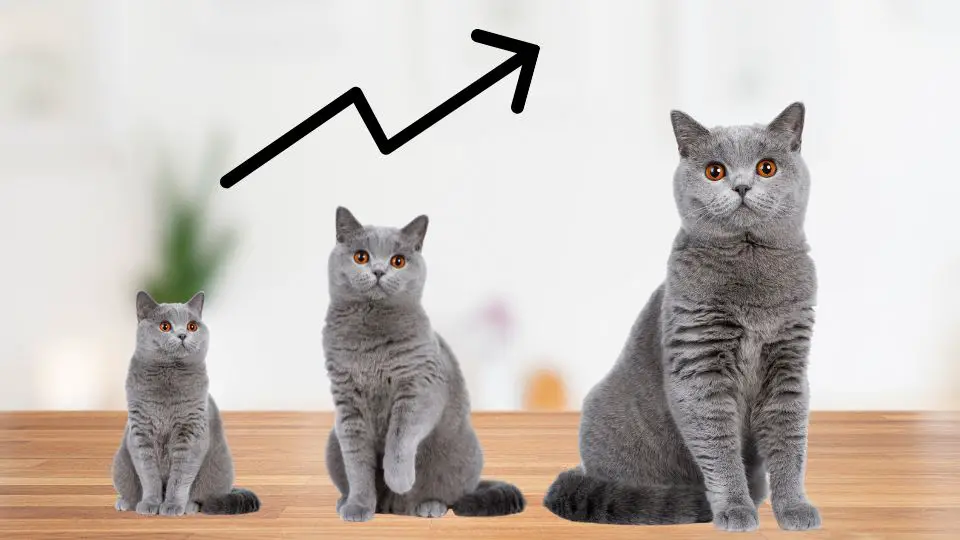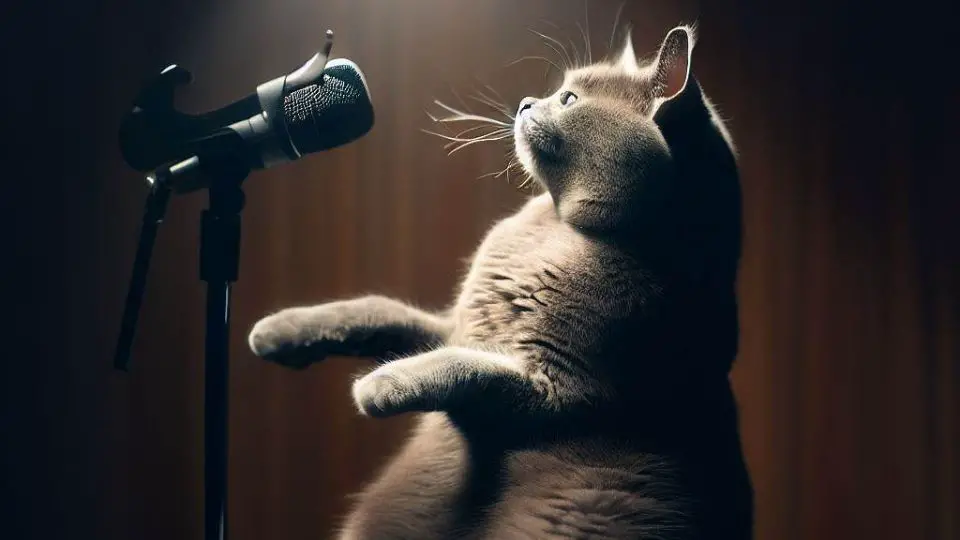Are you a proud owner of a British Shorthair and looking to train your furry friend? British Shorthair cats are intelligent and can be trained with patience and consistency.
Training your cat can improve your relationship and create a well-behaved pet. In this article, we will cover basic and advanced training techniques, common training issues, and tips for maintaining successful training.
Whether you’re a beginner or an experienced pet owner, these tips will help you train your British Shorthair and create a happy and healthy bond with your feline friend.
Understanding Your British Shorthair
British Shorthairs have a distinct personality characterized by being calm, easy-going, and laid-back. They are not typically demanding or overly active like some other breeds. It is essential to understand your cat’s personality to determine the most effective way to train and care for them.
One way to get to know your British Shorthair is by observing their behavior. Take note of what they like and dislike, their play style, and their reactions to different stimuli. This will help you identify what motivates them and what training methods will work best.
Cats are creatures of habit and prefer routine and predictability. They are also independent animals that enjoy having their space and privacy. Recognizing these traits and catering to their needs will make training and caring for your British Shorthair easier and more effective.
You should also understand their communication methods. Cats communicate through body language, vocalizations, and scent marking. Knowing what different postures and sounds mean will help you understand what your British Shorthair is trying to communicate to you.
Are British Shorthair easy to train?
British Shorthairs are known for their intelligence and trainability, making them relatively easy to train compared to other cat breeds. With the right training techniques and consistent practice, they can learn various behaviors and tricks. However, like all cats, British Shorthairs have their unique personalities, which can affect their willingness to learn and their response to training.
Is British Shorthair good for beginners?
British Shorthair cats are known for their affectionate and easygoing personalities, which can make them an excellent choice for first-time cat owners. They are generally very adaptable and can easily adjust to different living environments, making them suitable for apartment living or larger homes.
Moreover, British Shorthairs are relatively low-maintenance when it comes to grooming, which can be ideal for new cat owners who may not have experience with regular brushing and grooming needs.
Basic Training Techniques for British Shorthair Cats
Training your British Shorthair can be a fun and rewarding experience, helping to create a strong bond between you and your feline friend. While some cats may seem aloof or uninterested in training, British Shorthairs are known for their intelligence and willingness to learn.
Litter box training
Litter box training is an essential part of training your British Shorthair, and you should start as soon as you bring your new kitten home.
Choose a quiet and easily accessible location for the litter box, and make sure it is large enough for your cat to comfortably use. Show your kitten where the litter box is located, and encourage them to use it regularly. If your cat has an accident outside of the litter box, gently place them in the box to reinforce the proper location.
Scratching post training
British Shorthairs love to scratch, so you have to provide them with a designated scratching post to prevent damage to your furniture.
Place the scratching post in a central location where your cat can easily access it, and encourage them to use it by rubbing a bit of catnip on the post or gently guiding their paws to it. Praise your cat when they use the scratching post, and gently discourage them from scratching elsewhere.
Clicker training
Clicker training is a form of positive reinforcement training that uses a clicker to mark desirable behavior. Start by teaching your British Shorthair to associate the click sound with a reward, such as a treat.
Once your cat understands the clicker, you can use it to reinforce good behavior, such as coming when called or using the scratching post. Click and treat immediately after the desired behavior to reinforce the positive association.
Here are some tips for clicker training your British Shorthair cat:
- Get your cat used to the clicker: Before you start clicker training, you should get your cat used to the sound of the clicker. Click the device several times and give your cat a treat each time to help them associate the sound with a positive experience.
- Start with simple commands: Begin by teaching your cat basic commands, such as sitting or coming when called. Use the clicker to mark the behavior you want, and reward your cat with a treat immediately after.
- Keep sessions short and positive: Training sessions should be short and sweet, and always end on a positive note. Avoid forcing your cat to do something they don’t want to do, and try to keep the training fun and enjoyable for them.
- Gradually increase difficulty: As your cat becomes more comfortable with clicker training, you can gradually increase the difficulty of the commands you’re teaching. Start with simple behaviors and work up to more complex ones.
- Be patient: Clicker training takes time and patience, so don’t get discouraged if your cat doesn’t get it right away. Keep practicing and rewarding good behavior, and your cat will eventually learn what you’re asking of them.
Positive reinforcement techniques
Positive reinforcement is one of the most effective training techniques for British Shorthairs. Use treats or verbal praise to reward desirable behavior, such as using the litter box or coming when called.
Be consistent with your rewards, and avoid punishing your cat for bad behavior. Instead, redirect their attention to a desirable behavior and reward them when they comply.
Advanced Training Techniques for British Shorthair Cats
Training your British Shorthair can be a rewarding and enriching experience for both you and your furry friend. While basic training techniques such as litter box and scratching post training are important, advanced training techniques can take your cat’s abilities to the next level.
Teaching tricks and commands
British Shorthair cats are intelligent and curious animals, making them great candidates for learning tricks and commands. Some popular tricks to teach your cat include sitting, jumping through a hoop, and giving high-fives. When teaching your cat tricks, be sure to use positive reinforcement techniques, such as clicker training and treats, to encourage good behavior.
To teach your cat a trick or command, start by breaking down the behavior into smaller steps. For example, to teach your cat to jump through a hoop, start by training them to jump over a small object such as a rolled-up towel. Once your cat has mastered this step, gradually increase the height of the object until they can jump through a hoop.
Encouraging good behavior
Encouraging good behavior in your British Shorthair is crucial for creating a harmonious relationship between you and your pet. Positive reinforcement techniques, such as praise and treats, can be used to encourage good behavior such as using the scratching post instead of furniture or using the litter box consistently.
Another way to encourage good behavior is through playtime. British Shorthair cats have a playful nature, so engaging in interactive play with your cat can help them release energy and reduce the likelihood of destructive behavior. Playing with toys such as laser pointers, catnip mice, and feather wands can provide mental and physical stimulation for your cat.
Discouraging bad behavior
Discouraging bad behavior in your British Shorthair is just as important as encouraging good behavior. Some common problem behaviors in cats include scratching furniture, biting, and aggression towards other pets or people.
To discourage bad behavior, you have to understand why your cat is exhibiting the behavior in the first place (remember what we said about understanding your little pet’s behavior?). Scratching, for example, is a natural behavior for cats and is important for keeping their claws healthy and strong. Providing a scratching post and training your cat to use it can help redirect this behavior.
If your cat is exhibiting aggressive or destructive behavior, it may be a sign of stress or anxiety. Providing a comfortable and stimulating environment for your cat, as well as seeking advice from a veterinarian or animal behaviorist, can help address these issues.
Common training issues
Like with any training process, there may be some challenges that arise along the way. Here are some common training issues that may arise with a British Shorthair and tips to deal with them:
Litter box training
If your cat is not using the litter box consistently, it may be due to a number of factors such as the location of the litter box or the type of litter used.
Make sure the litter box is in a quiet and private area, away from food and water bowls. Use a litter type that your cat is comfortable with and make sure to scoop it daily.
Scratching behavior
Scratching is a natural behavior for cats, but it can be frustrating when they scratch furniture or other items in the home.
Provide your cat with a variety of scratching posts and pads in different materials to find what they prefer. Place them in areas where your cat likes to scratch and encourage them to use them with positive reinforcement.
Aggression
If your British Shorthair is displaying aggressive behavior, you should address it right away. Start by identifying the triggers that cause the aggression and remove them from the cat’s environment. Consider consulting with a veterinarian or a professional animal behaviorist for additional support.
Jumping on counters
Many cats enjoy jumping on counters, but it’s not a behavior that most owners appreciate. To discourage this behavior, provide your cat with plenty of vertical spaces such as cat trees and shelves. You can also use positive reinforcement by rewarding your cat when they use their designated spaces instead of jumping on counters.
Here are some tips from our experience at dealing with a British Shorthair that likes to jump on counters:
- Provide alternative elevated surfaces: British Shorthairs like to climb and perch, so provide them with an alternative elevated surface such as a cat tree or window perch.
- Use a deterrent: Cats dislike certain textures and smells, so placing double-sided tape, aluminum foil or citrus-scented items on the counter can discourage them from jumping up.
- Training: Train your British Shorthair to stay off the counters by using positive reinforcement. When they remain on the ground, reward them with treats or toys.
- Create a designated area for feeding: If your cat is jumping on the counter to reach food, create a designated feeding area on the ground.
- Consistency: Be consistent in your approach and do not allow your cat to jump on the counter even once, as this will confuse them and make training more difficult.
Maintaining Your Cat’s Training
Consistency is key when it comes to maintaining your cat’s training. Make sure to continue using the same commands, signals, and positive reinforcement techniques that were used during the initial training process. Also, remember to praise and reward your cat when they exhibit good behavior, as this will encourage them to continue.
Cats are intelligent animals, and they are always learning. As your cat grows and matures, their training needs will change. Remember to continue training your cat throughout their life to keep their minds stimulated and to help them learn new behaviors.
This can be achieved by introducing new commands, teaching them new tricks, and providing them with new challenges to keep them mentally and physically stimulated.
Tips for successful training
Training your British Shorthair cat can be a fun and rewarding experience for both you and your furry friend. However, it can also be a challenging task. To ensure successful training, here are some tips to keep in mind:
- Patience and consistency: Training takes time and patience, so don’t get frustrated if your cat doesn’t catch on right away. Consistency is key to reinforcing good behavior.
- Starting with basic commands: Start with basic commands such as “sit” and “stay” before moving on to more advanced training techniques.
- Gradually increasing difficulty: As your cat becomes more comfortable with basic commands, gradually increase the difficulty level by adding new commands or increasing the duration of training sessions.
- Keeping training sessions short and frequent: Keep training sessions short and frequent, ideally around 10-15 minutes each time. This will help keep your cat engaged and prevent them from becoming bored or frustrated.
- Use positive reinforcement: Reward your cat with treats, praise, and affection when they exhibit good behavior. This positive reinforcement will encourage them to repeat the behavior in the future.
Remember, every cat is different and may respond differently to training techniques. Be patient, stay consistent, and most importantly, have fun with your furry companion!
Socializing With Your British Shorthair Cat
British Shorthair cats are known for their affectionate and laid-back personality, making them great pets for households with multiple pets or children. However, socialization is still important to ensure your cat is comfortable and well-adjusted in different situations. Here are some tips for socializing your British Shorthair cat:
Encouraging positive interactions with humans
- Handle your cat regularly from a young age, and make sure they are used to being touched and picked up.
- Provide plenty of positive reinforcement and treats when your cat exhibits good behavior.
- Play with your cat regularly to build a strong bond and encourage positive interactions.
Dealing with aggression and anxiety
- If your cat is exhibiting signs of aggression or anxiety, such as hissing or growling, try to identify the trigger and remove it if possible.
- Gradually desensitize your cat to the trigger by exposing them to it in a controlled manner, and using positive reinforcement to reward calm behavior.
- Consider consulting with a veterinarian or animal behaviorist for additional guidance and support.
Getting your British Shorthair used to other pets
- Introduce your cat to other pets slowly and in a controlled manner. Start by letting them sniff each other through a closed door, and gradually progress to supervised interactions.
- Use positive reinforcement, such as treats and praise, to reward good behavior during interactions with other pets.
- If there are any signs of aggression or discomfort, separate the animals and try again later.
How do you get a British Shorthair to like you?
Here are some tips on how to get a British Shorthair to like you:
- Give them space: British Shorthairs can be independent and enjoy having their own personal space. Give them some alone time to explore and relax.
- Offer treats and toys: Providing treats and toys can help you bond with your cat and make them associate you with positive experiences.
- Use positive reinforcement: Reward your cat with praise or treats when they do something you like, such as coming when called or cuddling with you.
- Pet and groom them: Grooming and petting your cat can help them relax and bond with you. Start slowly and be gentle, especially if they are not used to being handled.
- Be patient: Building a strong bond with your cat takes time and patience. Don’t force interactions or become frustrated if your cat is not immediately affectionate.
Conclusion
In conclusion, training your British Shorthair can be a rewarding and fun experience for both you and your furry companion. With patience, consistency, and positive reinforcement techniques, you can successfully teach your cat basic and advanced skills and encourage good behavior while minimizing bad habits. It’s important to remember to understand your cat’s personality and behavior, and to socialize your cat with other pets and humans to ensure a happy and healthy relationship. With the right training and care, your British Shorthair can become a well-behaved and loving companion for years to come.







